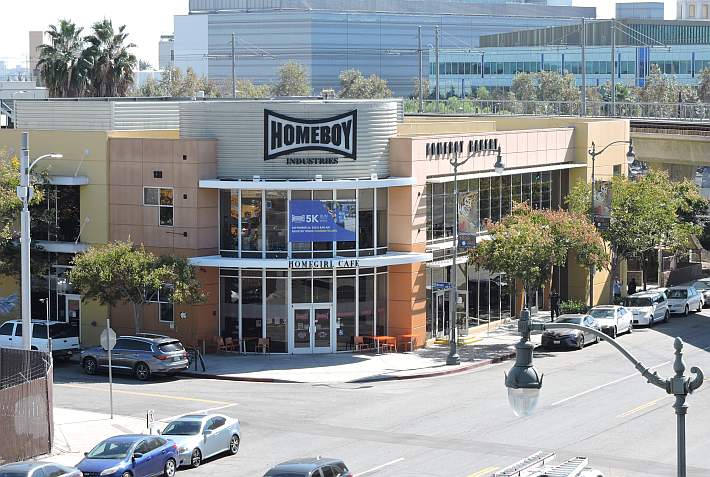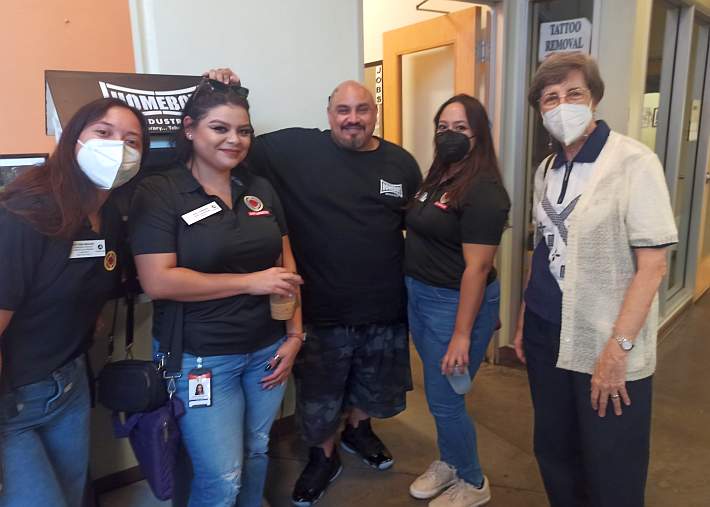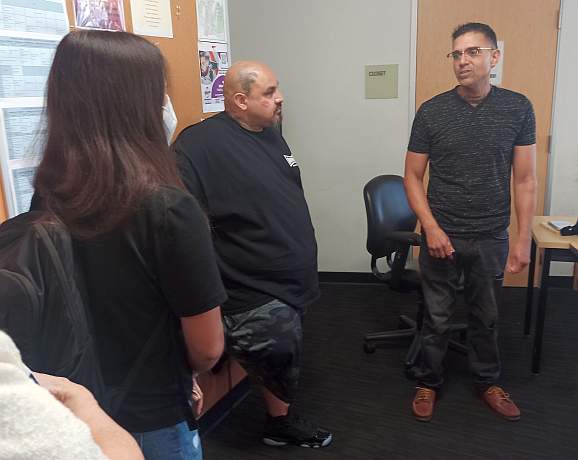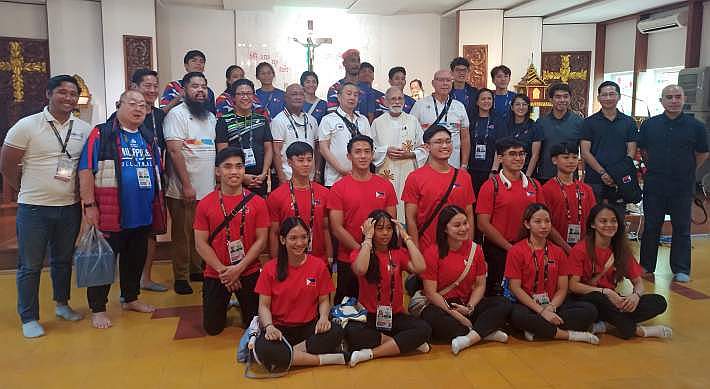
Currently the Southeast Asia Games are taking place in Phnom Penh, and yesterday the Philippines team that is participating came to our Sunday mass. We wish them good luck in their competitions!
Charlie Dittmeier's Home Page

Currently the Southeast Asia Games are taking place in Phnom Penh, and yesterday the Philippines team that is participating came to our Sunday mass. We wish them good luck in their competitions!
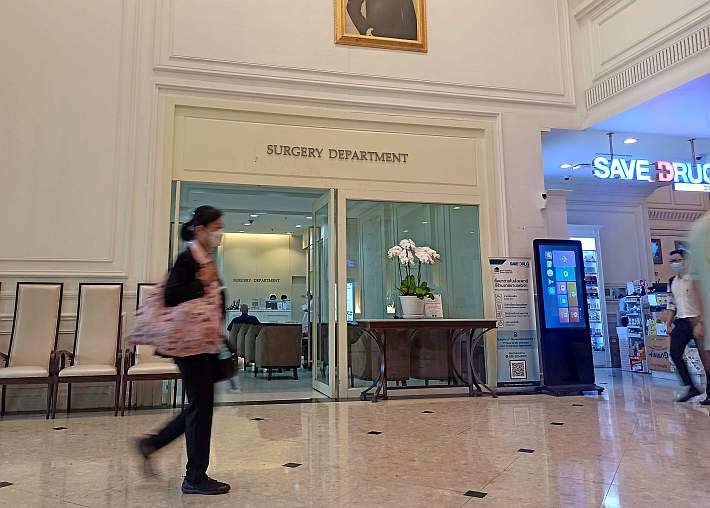
In the last year I have spent quite a bit of time in the Surgery Department at BNH Hospital in Bangkok. A routine physical exam in May, 2022 discovered cancer on my kidney and I had surgery then. After that I was back in November for a post-op follow up and in going through that they found more spots on the kidney. So I had to come back this week for CT scans to see what they were, but two scans indicated the spots were not cancer but scar tissue from the previous surgery. So all is well. Deo gratias.
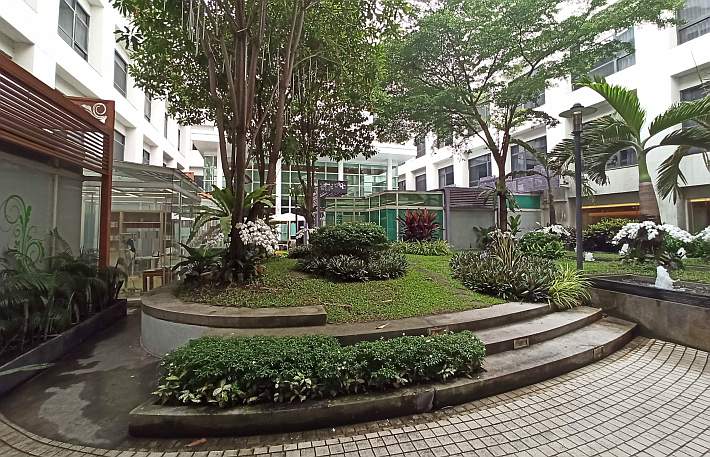
The other part of BNH where I spend a lot of time is the fourth floor, the general medical area where I have my physical exams. This is an interior courtyard on the fourth floor. It used to be all grass and landscaping but during the Covid time, they added some small offices and consultation rooms for an allergy unit. They made a good mix of work space and pleasant landscaping.
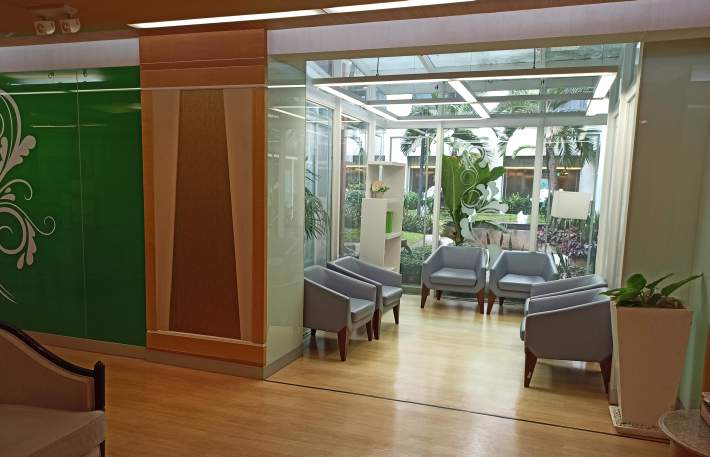
The architects created very comfortable and aesthetically pleasing connections between the existing interior rooms and the now-more-visible garden area outside.
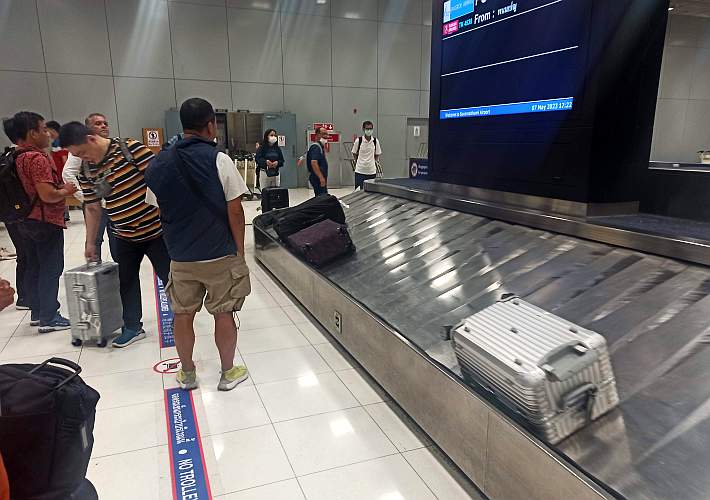
For me, one of the real irritants in air travel is waiting for luggage at the big airports. I don’t mind the waiting so much, but people crowd up right to the edge of the carousel so that others cannot see the bags that are coming. And it’s even worse when they bring the luggage trolleys up to the carousel. Bangkok puts this red-and-blue line around the carousel and asks people to stay behind it, and then everyone can see. Obviously (see the photo) not everyone follows this directive but it sure makes things better.
Tomorrow I go to see the surgeon in Bangkok who in May removed part of my kidney, for a six-month checkup. I suspect it will all be rather routine but it requires a trip to Bangkok. The beginning of that trip was not routine–beset by horrendous Phnom Penh traffic–but then, maybe that unfortunately is becoming routine also.
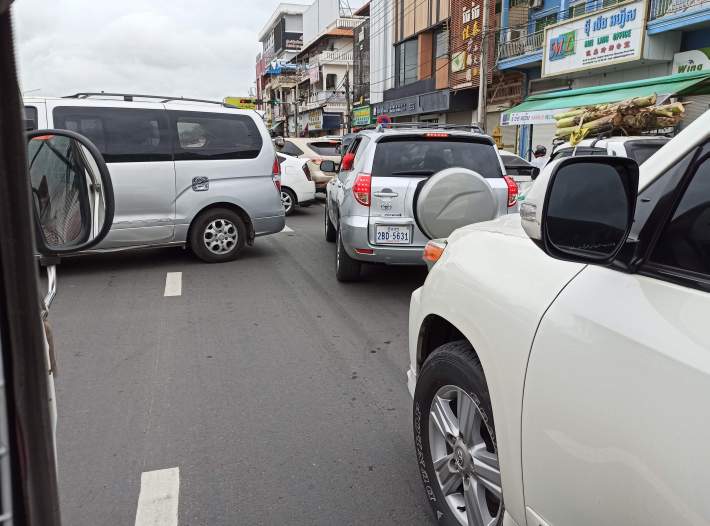
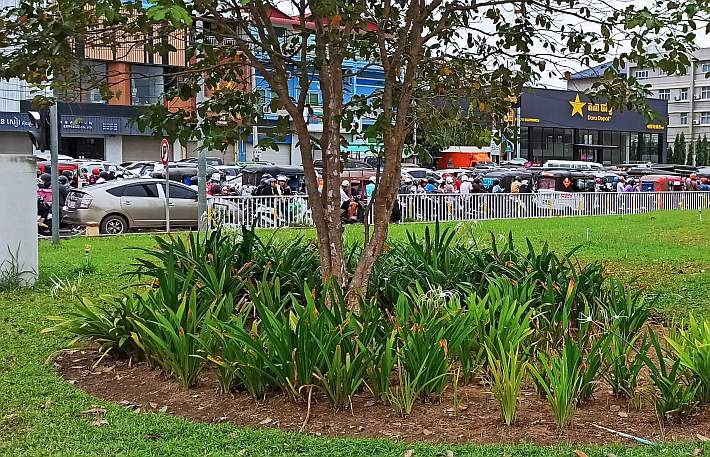
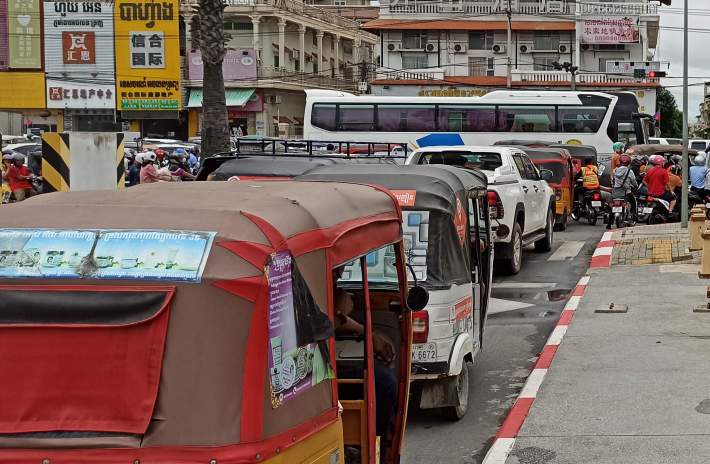
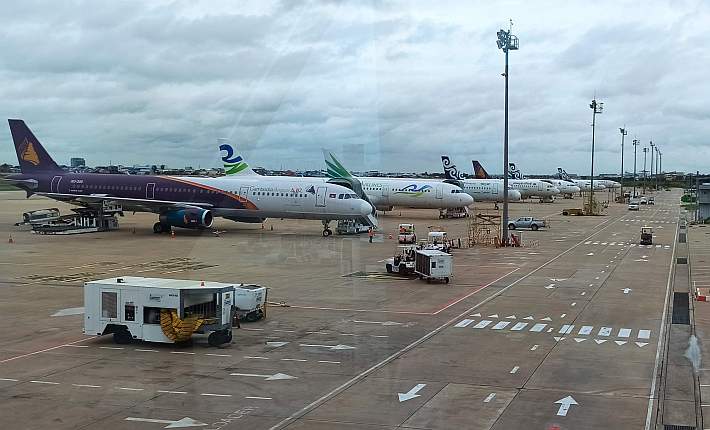
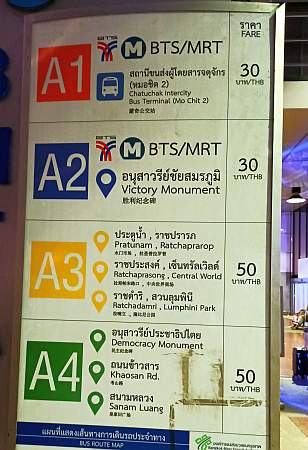
I was on an economy airline and limited to just a carryon so I exited quickly, bought a Thailand SIM card, and headed for the airport bus stop. I took at A3 bus to Lumphini Park, the closest I could get by bus to the Maryknoll house. From the park I then took a taxi to Maryknoll. Today the the US dollar = 34.21 Thai baht so the 50-minute airport bus ride was 50 baht, about US$1.50.
While the Asia Area Director, Steve Veryser, is in Cambodia, the Maryknoll Lay Missioners here are having a short retreat experience in Siem Reap where Angkor Wat is located. Today was a travel day.
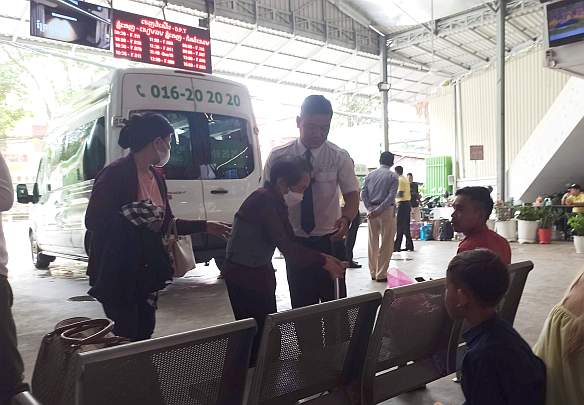
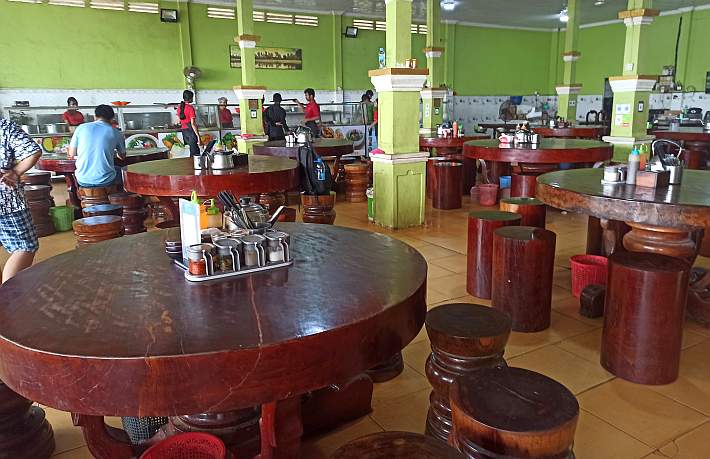
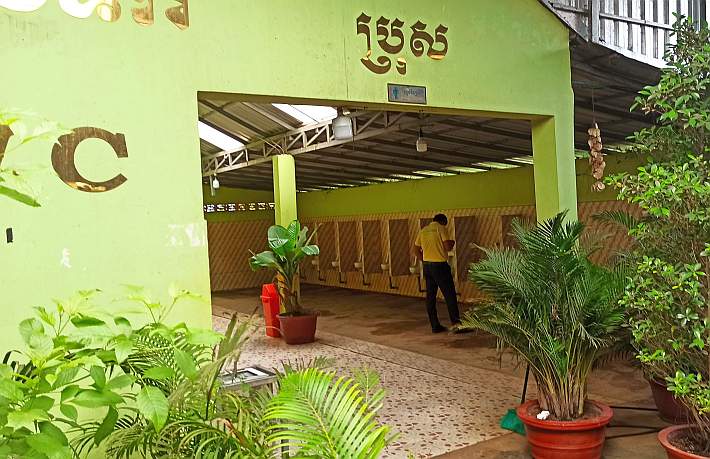
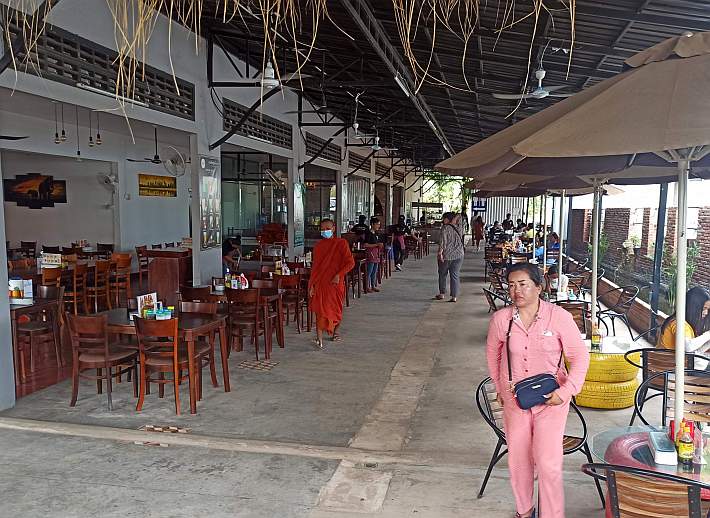
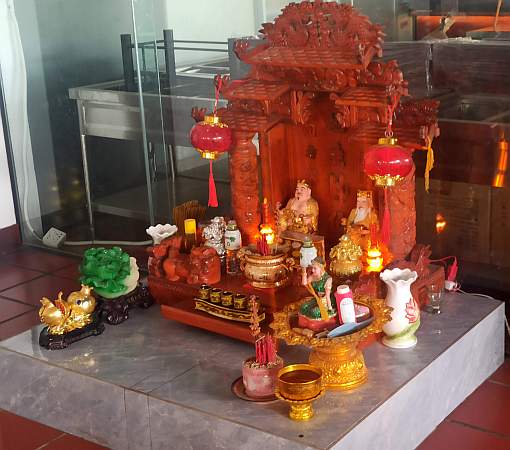
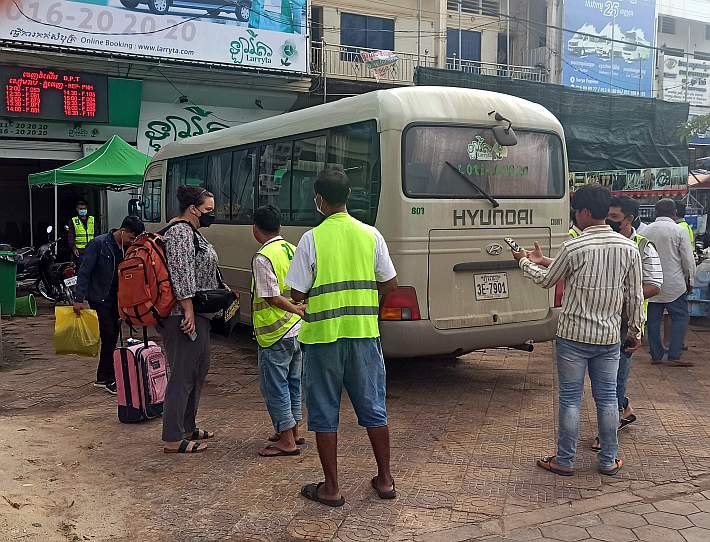
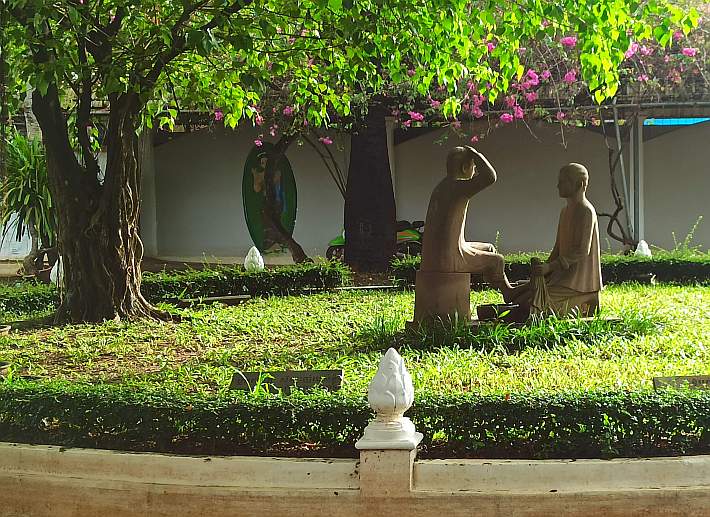
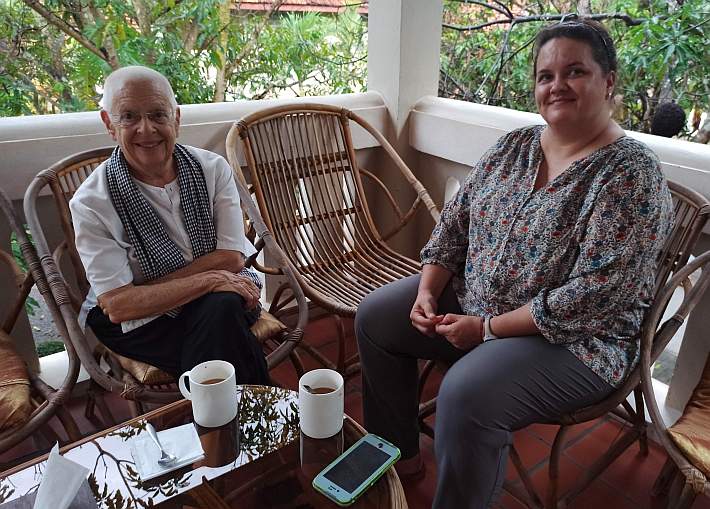
Beth Goldring is a Buddhist nun who is leading our reflection, working from her Buddhist studies and experience to help us develop a theme of nonviolence.
I’m a pilot (although I haven’t flown for a while) and have always loved planes. Now I am especially enamored of the A380 double-decker aircraft. I was booked on one of those on the return trip between Los Angeles and Seoul, Korea, and I chose a seat on the upper deck.
It was really surprising to me how roomy the upper deck was, with more space than many of the single-aisle aircraft I fly. One noticeable difference is the width of the rows. On the wider lower deck, there are ten seats across. On the upper deck there are only eight.
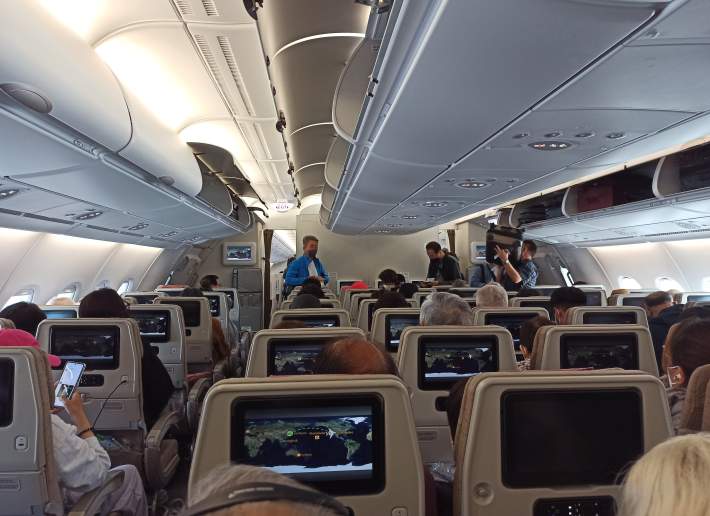
I’m used to seeing more and more and bigger and better in-seat screens in airplanes these days but Asiana Airlines had a twist on that that was new for me. This was a smaller A319 aircraft and the seats didn’t have built-in screens for movies and entertainment. The plane had an entertainment system, though. It just used the passengers’ phone and tablets for the display. The seatbacks had a built-in phone holder that popped open so passengers could watch movies, etc., from the plane’s system on their own devices. The holder was a first for me.
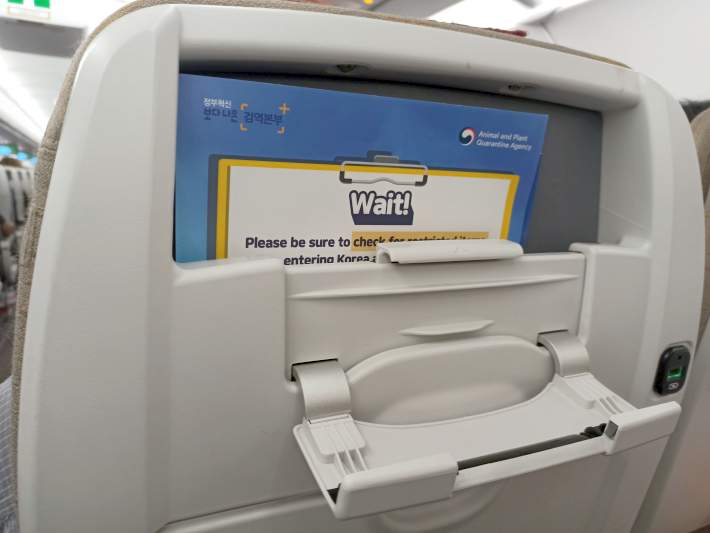
These two days are together because that’s how they happen when yoh are on a long (12.5 hour) flight from Los Angeles to Seoul, Korea. I left LA at noon Wednesday and arrived in Seoul at 5:30 PM Thursday. Now I’m at Gate 18 at Inchon airport waiting for my final flight to Phnom Penh.
The Asian airlines and airports seem to have an edge over US counterparts. For example, the Asian planes seem to have more electrical outlets at the seats and they are marked better and easier to use. And here at Inchon I just saw bank of food delivery robots. A passenger scans a QR code for a menu, makes an order, gives his gate number, and goes to the gate, and then the robot picks up the food and delivers it.
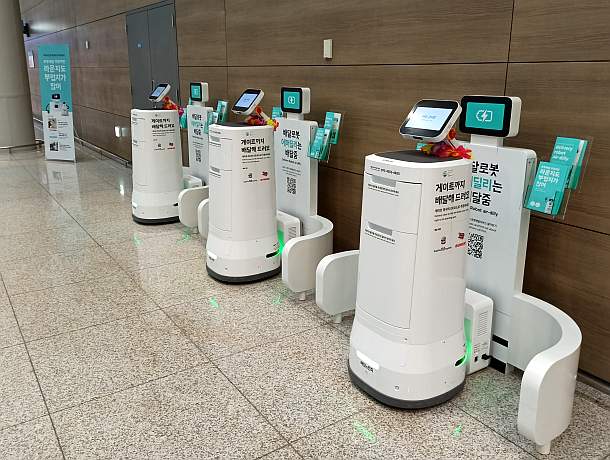
The Maryknoll Sisters seems to be on four or five acres of land, and with an environmental focus, the sisters are shifting away from grass and lawns that need to be watered, changing to cactus and other succulents that need much less water.
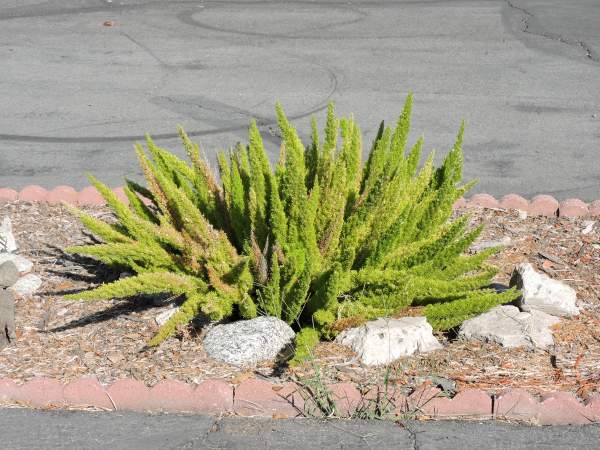
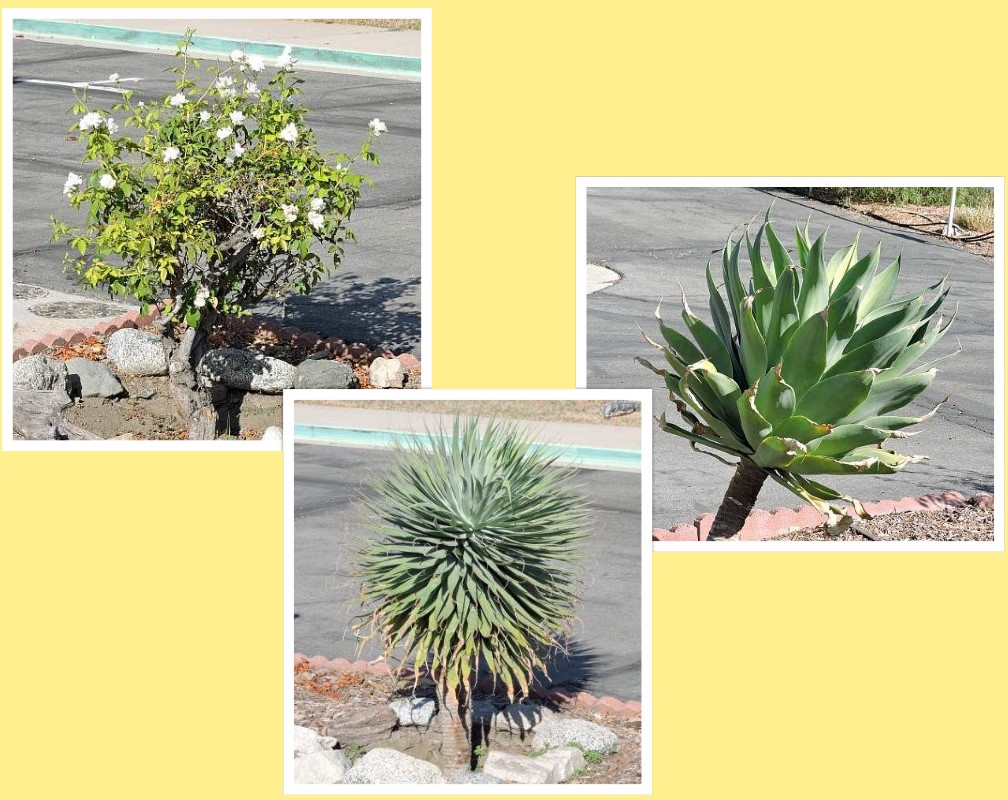
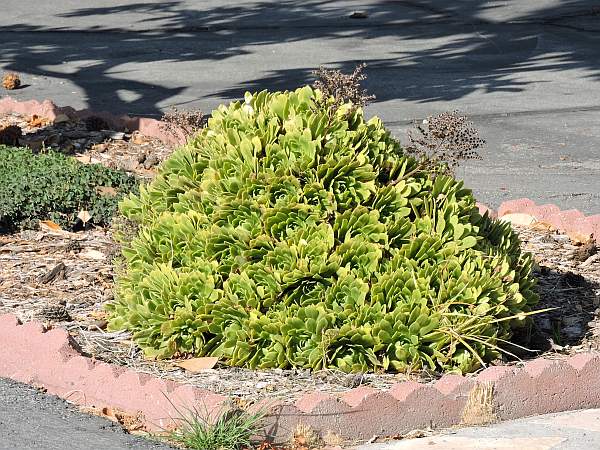
Today Sr. Arlene Trant, MM, took me to downtown LA where we visited Homeboy Industries, the famous project started by Jesuit Fr. Greg Boyles to give gang members a new chance at life. It is quite an inspiring place.
